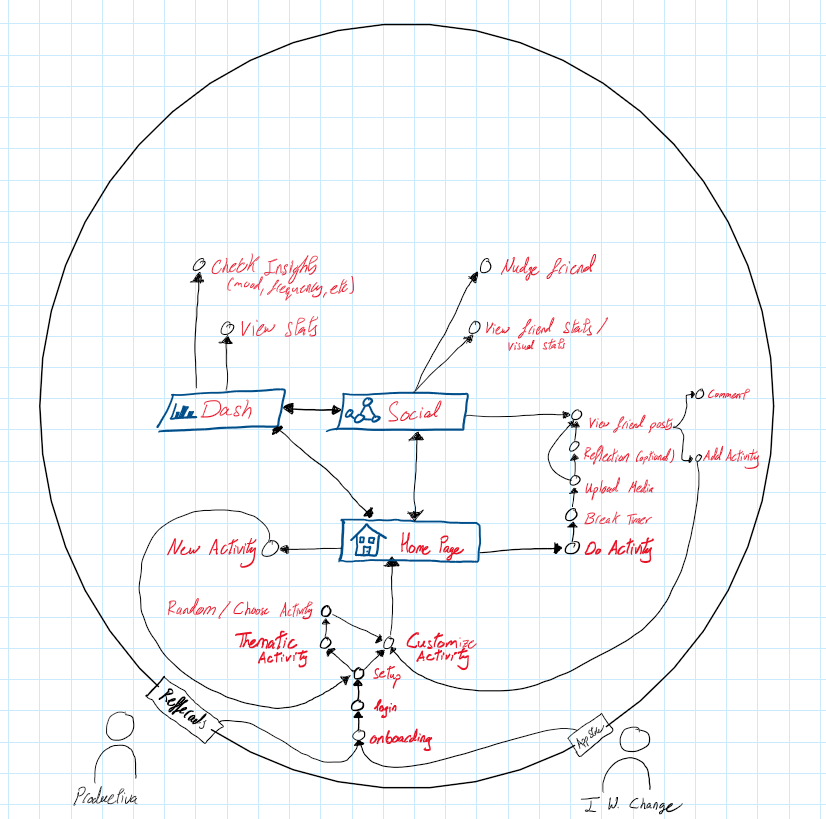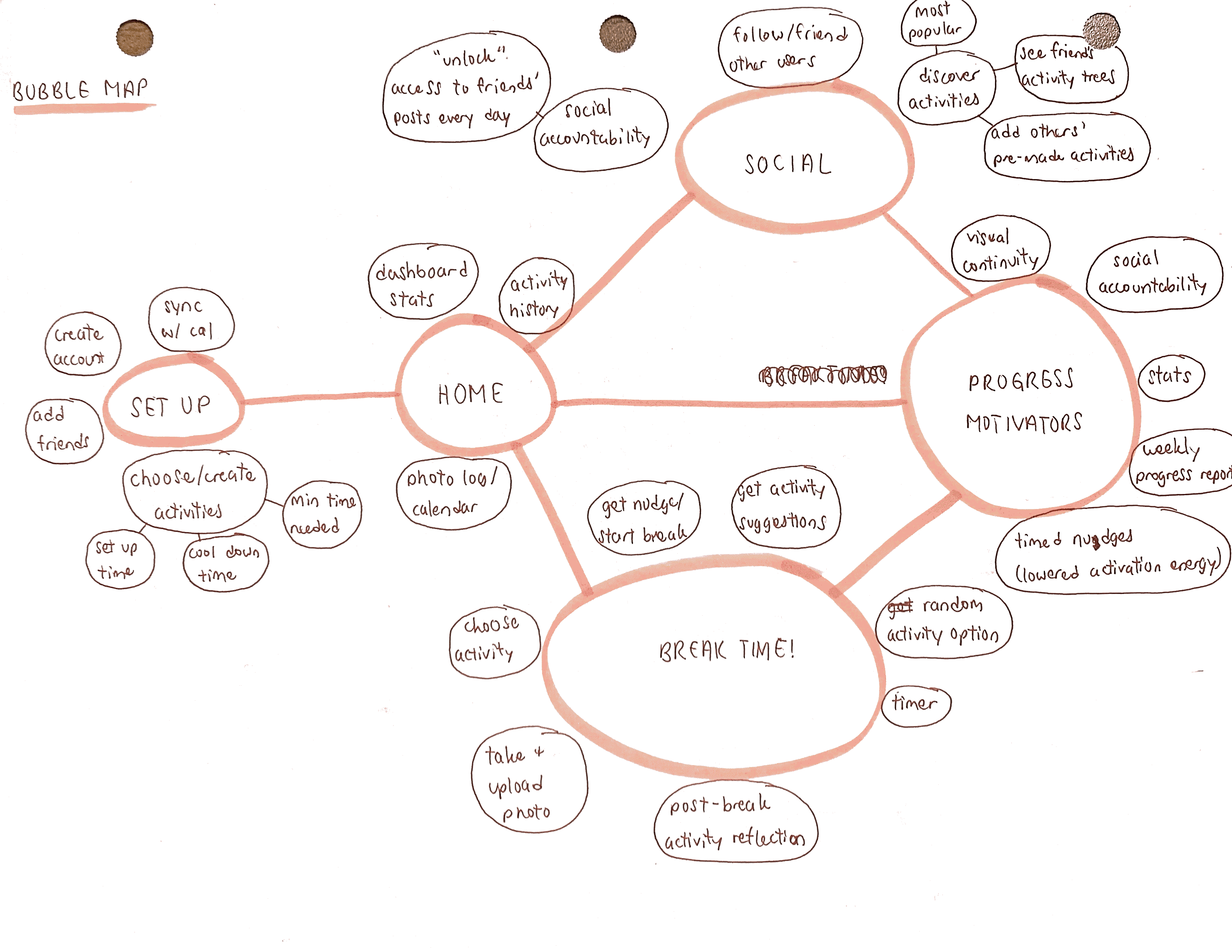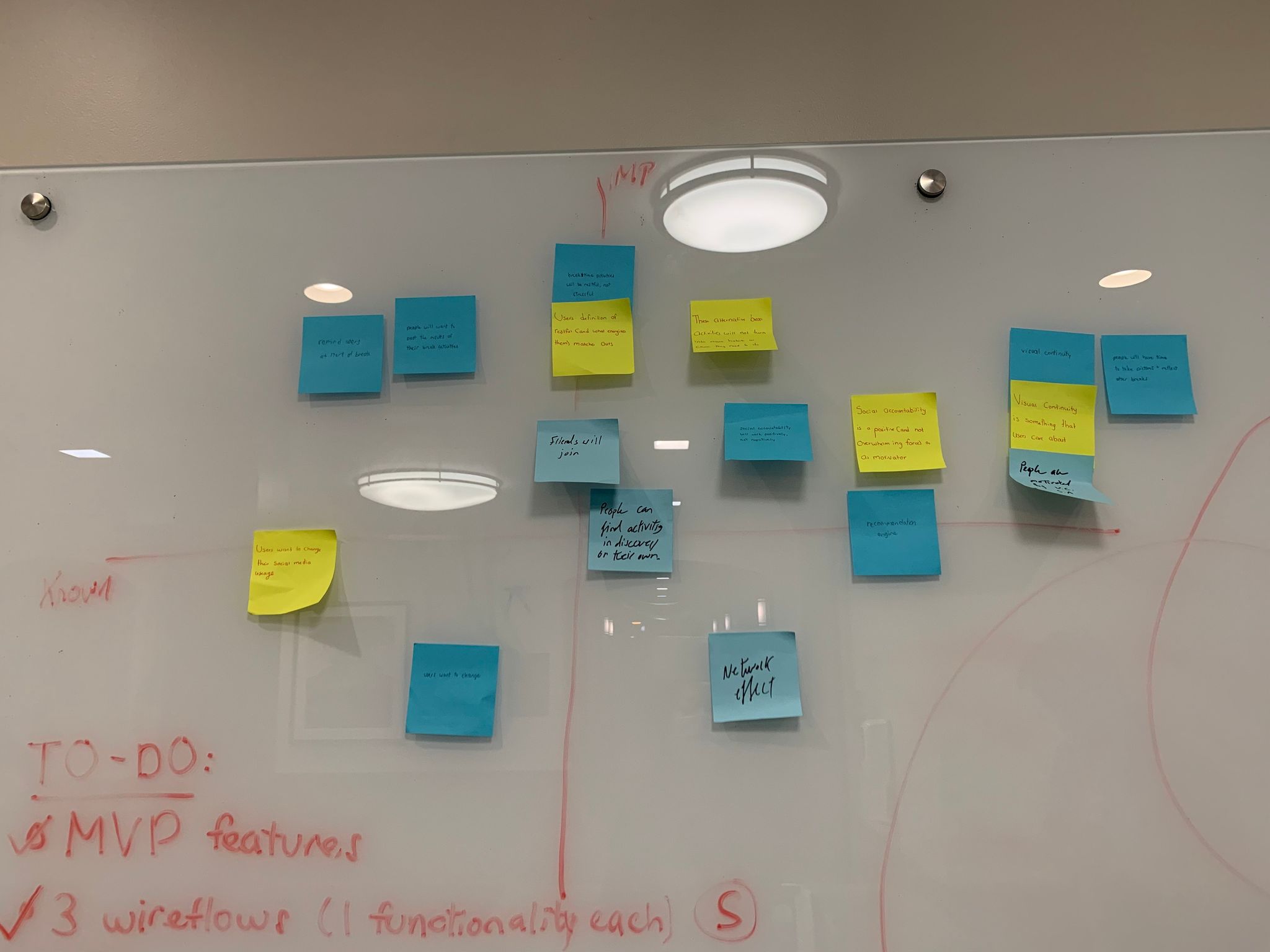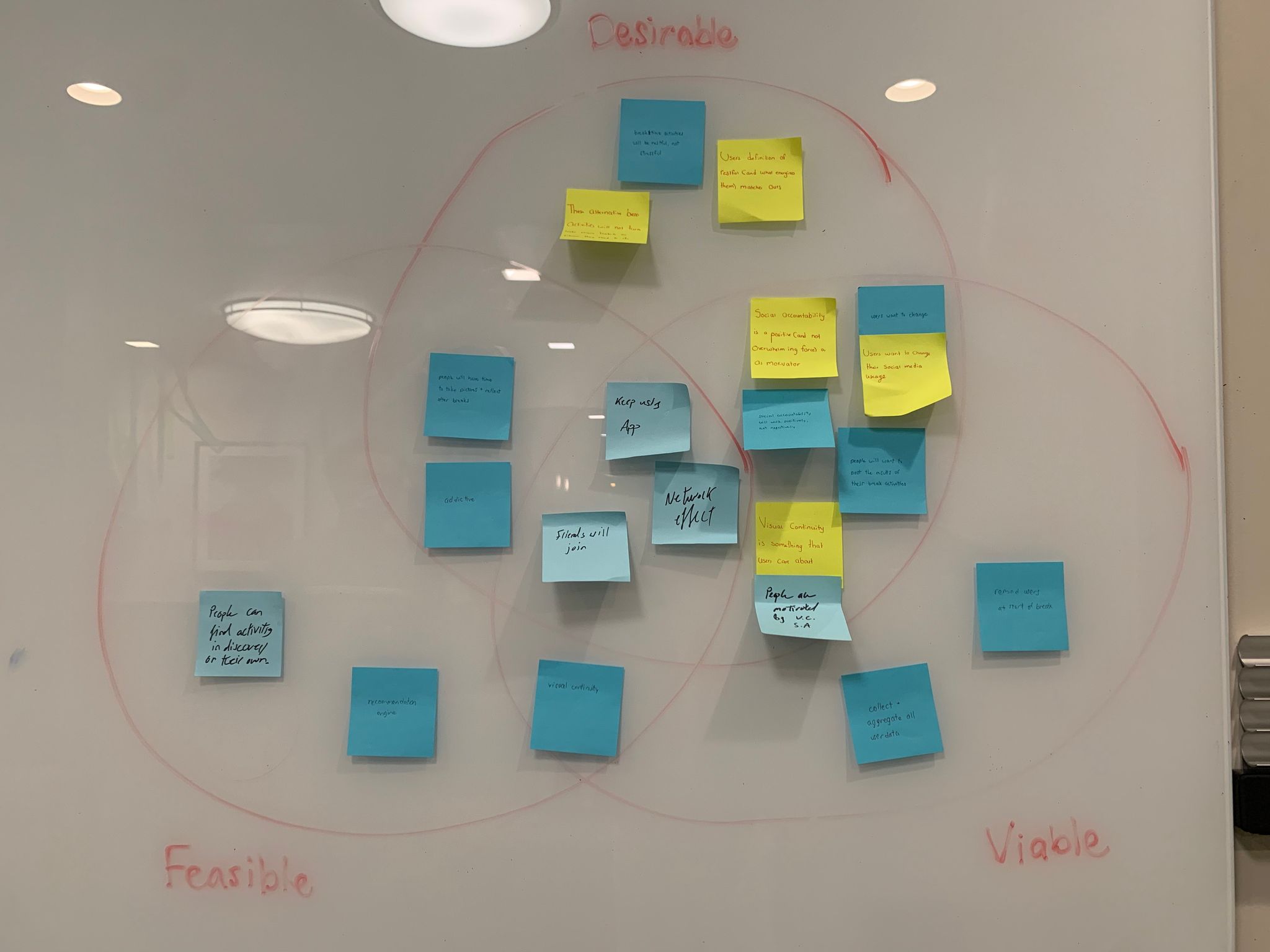System Path
In the figure below, we outline the system path for our MVP features. As you can see, we have the userflow for starting the app, adding activities, sharing with friends and checking their dashboard.

Bubble Map
For our bubble map, we discussed where every aspect of the MVP application lives and the sections undereach they reside.

Assumptions Map
In the figure below, we mapped out our assumptions in two different ways. We first started by mapping whether the assumptions are feasible, viable, or desirable (or a combination). We then mapped the assumptions on a 2×2 grid to see which assumptions are the most important and least examined.


Assumption Testing – The three questions we’re trying to answer
1) Does Visual Continuity (i.e a tree that grows as you complete more and more activities) prompt individuals to do an activity more?
2) Some people reported their alternative break time activity becoming just another habit that they had to do. Does adding a “random activity” option and gamifying the process a bit help people more spontaneously complete an alternative activity?
3) Lastly, a core assumption of our app is that the activities we recommend are restful, not stressful. Otherwise, what would be the point? To test this, we plan on adding a reflection component to our intervention, to gauge just how restful our recommended activities are.
Assumption Design
Given all that, here is the Intervention we plan to run:
The Pre-interview
While we’ll ask a few more questions to investigate the participant’s goals, motivations and challenges, these two questions are the essence of what we’d like to learn.
Q1 – What is an activity (non-work related) that you would like to do everyday but are unable to?
Q2 – What is the smallest amount of time required to do a tiny bit of that activity?
The goal with these questions is to help us, the researchers, construct the list of “alternative break time activities” that we’ll send the participant. For example, if the participant answers “Write more” to question 1, and “Freewrite for 5 minutes” to question 2, we now have a better idea of what a tailor-made alternative break time activity for them might look like.
Intervention Format
Beginning of the Study: We brief the participants on their study, and give them their custom list of “alternative break time activities.” These will be in areas aligned with their interests, and will always take 15 minutes or less. We also add the participant to the study group chat (consisting of the researchers and other participants in the study).
Daily – The activities below will be done daily
Morning: We, the researchers, remind our users to take a picture of them doing an alternative break time activity during the day. Additionally, we send them a document with a hidden break time activity. When it’s time to take a break, they can un-highlight it to see what it is.
Early Evening: We ask our participant at a random time (after their scheduled activities are over) to post the picture of them doing the activity to the study group chat.
Night: We ask them how they feel about their progress with the activity, and expect just a quick response. Additionally, they will be shown a “Visual Continuity Grid” to visually see their break time consistency compared to their friends.
Post-Interview
While we’ll ask a few more questions to investigate the participant’s experiences, these two questions are the essence of what we’d like to learn.
Q1 – Was there a change in the amount of time/energy that you put into this activity before and during the study? Why do you think that might be?
Q2 – How did you pick which activity you’d spend during your break? What factors weighed into your decision?
Q3 – What did you think about the random activities? Did they appeal to you more or less than the list of pre-decided activities?




Comments
Comments are closed.